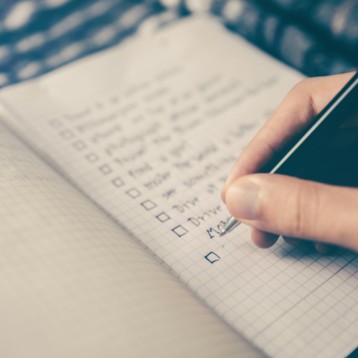
A three-digit number can impact your financial life in a big way. It’s not your area code — it’s your credit score. A good credit score can open multiple doors and opportunities. A bad credit score can put you in a financial fix.
If your credit score is already in the 700-plus range, you can get loans easily at the best interest rates and terms. You will also get approved for a host of financial products like mortgages, car loans, personal loans, and credit cards.
If you have a poor credit score, though, these privileges are often denied to you. But take heart — that number is not static. You can work to increase your credit score over time to get in a higher tier. Not sure where to start? Read on to learn how to improve your credit score when you have lost all hope.
1. Use a Secured Credit Card
Most credit cards are unsecured. You can get approved for one only if you meet certain requirements. The most basic requirement is already having a good credit score. A secured credit card is the right choice for you if you have a low credit score.
You can get started with a secured card by making an initial deposit or funds transfer. That deposit becomes your credit limit and is used as collateral. If you fail to pay off the balance, the company will recover the losses from the deposit. Each bank has a different rule for deposits. Generally, the range is between $200 and $1,000.
You can improve your credit score with a secured card by spending responsibly. Charge smaller amounts and make sure you pay the full amount every month. This will help establish a consistent payment history and improve your credit score over time.
After a year or more, you may get the option to convert to an unsecured line of credit. If you meet all the terms of the secured credit card agreement, you will get your deposit back.
2. Check for Credit Report Errors
Don’t consider your credit report as sacrosanct. There are many instances of people getting credit reports with major errors. Go through the information meticulously and check whether the payments you have made are reflected in the report.
If you find errors, dispute them immediately. There are user-friendly digital processes available to dispute payments online. If the errors are genuine, rectifying them with the reporting company can help improve your credit score.
3. Make Payments on Time
Making payments on time can help you build up a strong reputation and credit. If you are paying your bills on time, continue the good habit. Over time, that history can help show potential lenders that you are a reliable risk.
If you have a habit of forgetting due dates, try setting up auto payments. But make sure you keep an adequate balance in your account. If you are in the habit of not prioritizing bill payments, now is the time to change that. If automatic payments aren’t for you, then set up calendar reminders for each bill so you don’t forget to pay them.
4. Keep Your Debt Slate Clean
Unpaid debt and bills are the biggest negative influences on your credit score. Details of certain unpaid debts are sent to the credit reporting agencies. This results in a negative rating, which can send your credit score hurtling south. If you have outstanding debts, start the process of paying them off.
If you owe multiple agencies and have trouble tracking them, debt consolidation is an excellent option to consider. It allows you to consolidate multiple debts into a single installment payment. It will help you move toward a higher credit score.
5. Lower Your Credit Utilization Rate
A high debt-to-credit ratio can spell trouble for your credit score. Your credit utilization (how much credit you use compared to how much you have available) should be as low as possible. Ideally, you should keep your credit utilization at 30% or less.
This is another reason why paying off debt is important. The lower your credit utilization number, the better your credit score will be. In addition to paying off debt, you can apply for an increase in credit to minimize the rate of utilization. Yet another credit card strategy is to make payments early every month. This will result in posting a lower outstanding balance than your spending for the month.
6. Leave Old Accounts Open
Are you planning to close one or more of your credit cards because you don’t use them anymore? Think twice before taking that action. That credit utilization ratio you just read about is vital in calculating your credit scores. It is a measure of the available revolving credit being used at any given time. If you reduce your available credit by closing an account, your utilization ratio will get higher.
So even if you are not using an old credit card or use it rarely, it is better to leave it open. Credit scores also take into account the length of your credit history. An old account with a zero balance can help improve your credit history length and thus your credit score.
If implemented with a single-minded focus, the above steps can help you get closer to a high credit score. This will allow you access to better credit cards and enhanced credit opportunities. You will also be able to get approved for loans at lower interest rates and more favorable terms.
Obviously, this will not happen overnight. But with some planning, you can get your credit score above 700 in time to make the purchases you’ve been dreaming of.










